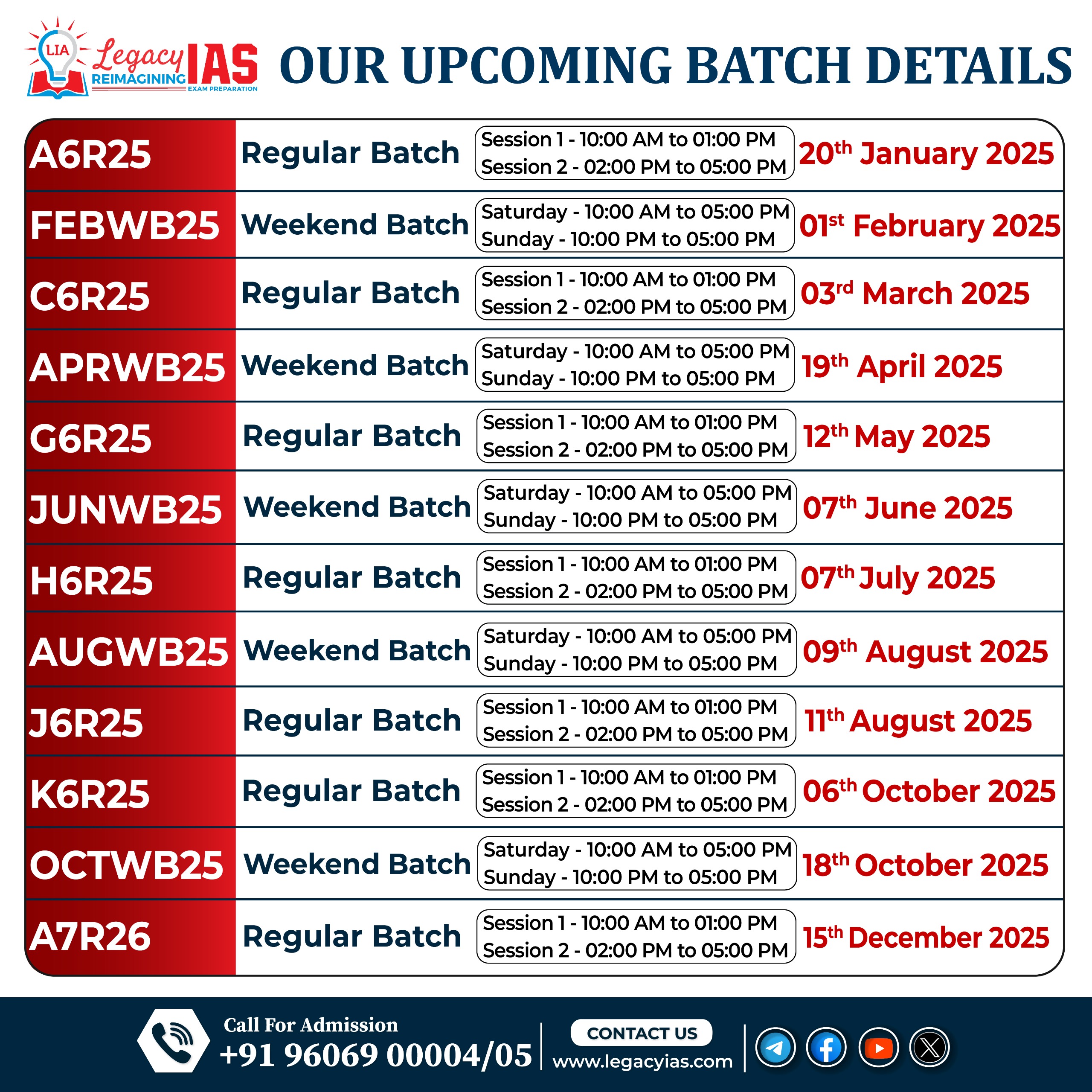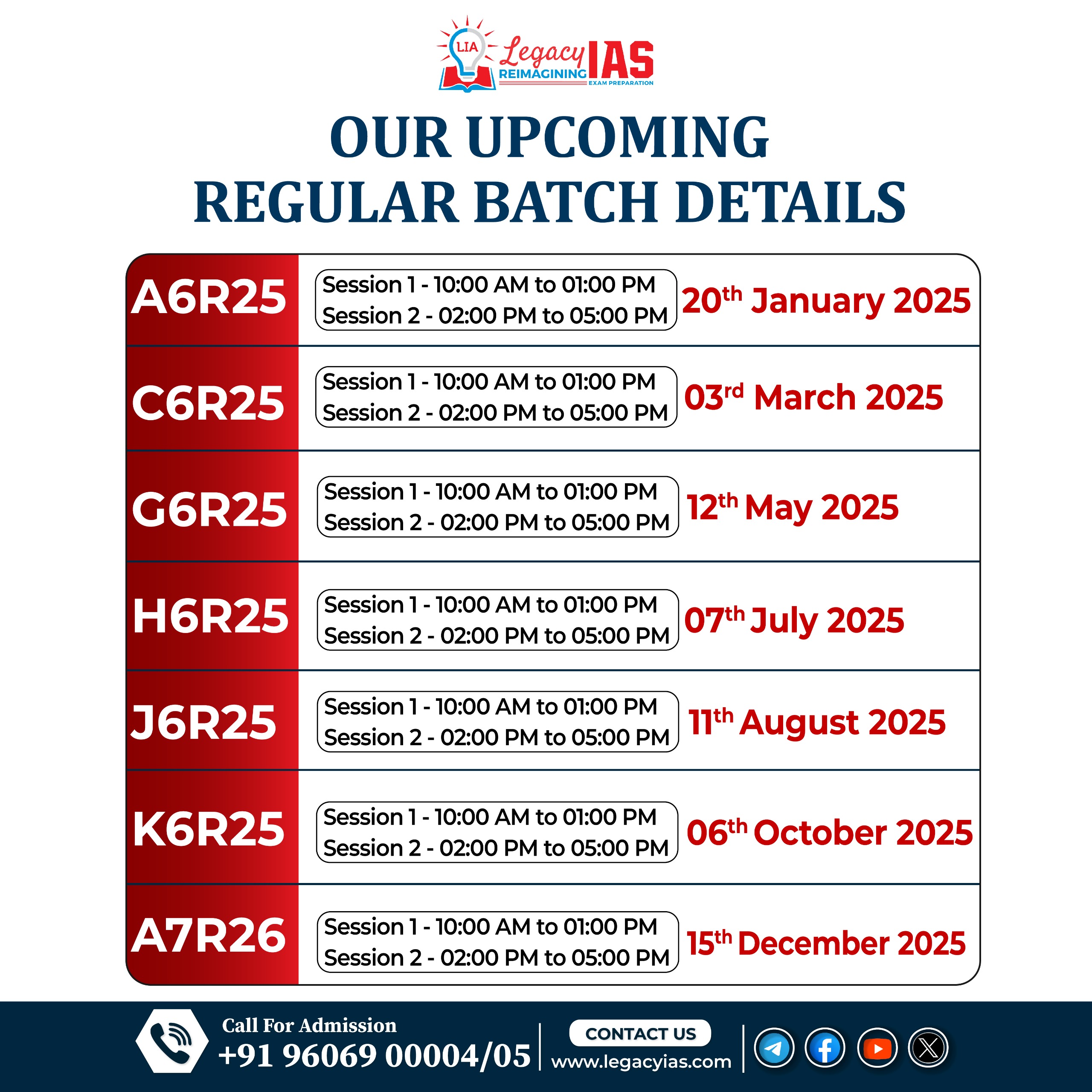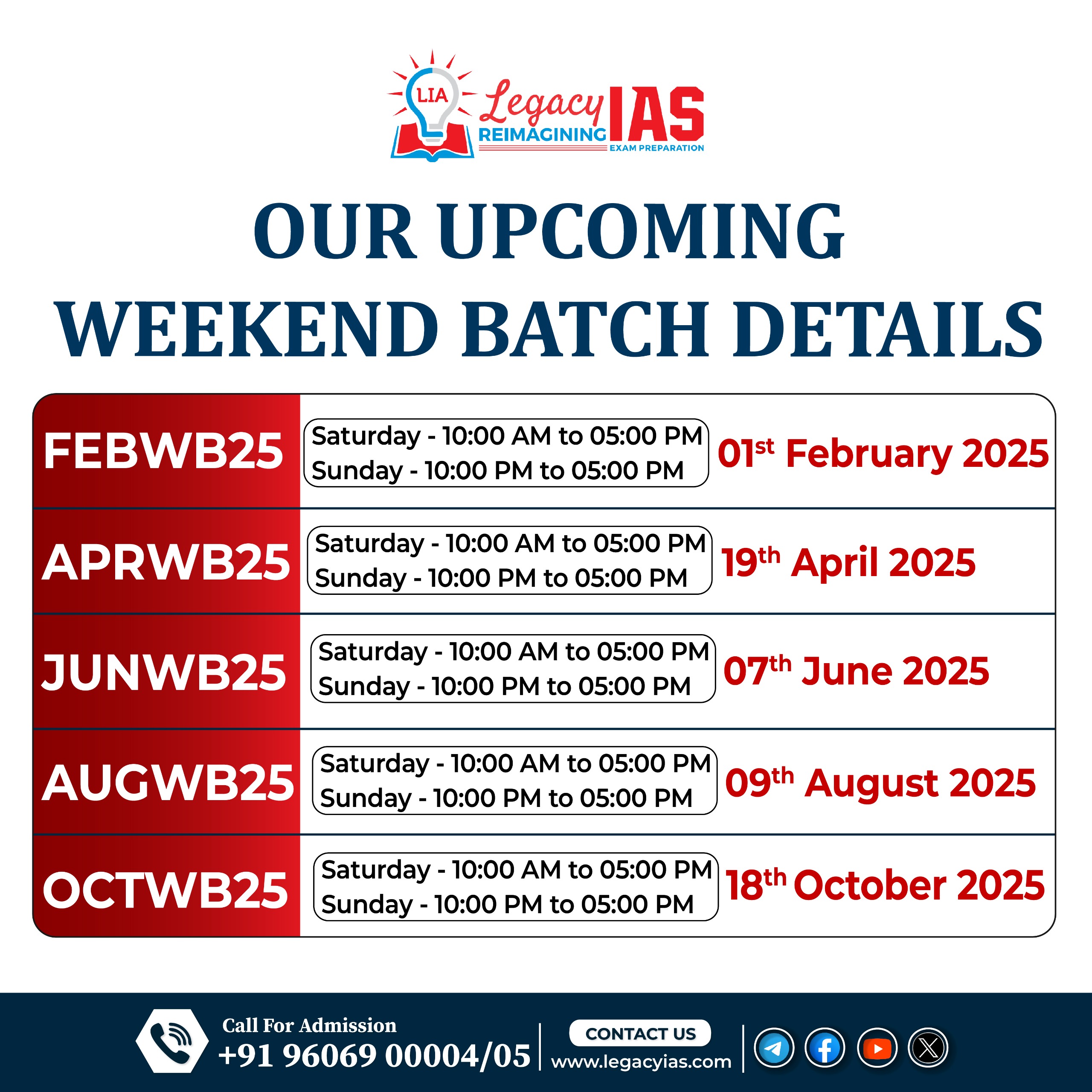Context :
- Industrial output growth slows to 2.9% in Feb.
- DRDO does release trials of long-range glide bomb
- Indian EVMs not connected to Internet or Wi-Fi, says EC after U.S. official’s comments
- India ‘eyeing win-win interim deal’ with U.S. during the 90-day pause
- 1.6 billion people in low- & middle-income countries lack social protection
Industrial output growth slows to 2.9% in Feb.
What is IIP? – The Basics
- Index of Industrial Production (IIP) is a composite indicator that measures the volume of production in India’s industrial sector.
- It is released by the National Statistical Office (NSO) under the Ministry of Statistics and Programme Implementation (MoSPI).
- The IIP is base-weighted (currently 2011-12 = 100) and consists of three core sectors:
- Manufacturing (77.63% weight)
- Mining (14.37%)
- Electricity (7.99%)
Relevance : GS 3(Economy )
What Happened in February 2025?
- IIP growth slowed to 2.9%, the lowest in the past six months.
- Well below the 4% growth projected by Reuters.

Sectoral Breakdown
| Sector | Feb 2025 | Feb 2024 |
| Mining | 1.6% | 8.1% |
| Manufacturing | 2.9% | 4.9% |
| Electricity | 3.6% | 7.6% |
- All three sectors decelerated, pointing to broad-based industrial slowdown.
Use-Based Classification – What’s Driving or Dragging Output?
- Capital Goods (machinery, infrastructure equipment):
- Grew by 8.2% (vs. 1.7% last year) – positive signal for future investments.
- Consumer Durables & Non-Durables, Intermediate Goods:
- Slower growth than previous year – indicates sluggish demand and possibly weak rural consumption.
Reasons Behind the Slowdown
- High Base Effect: Feb 2024 had robust industrial growth, making YoY comparisons weaker.
- Global Uncertainty: Geopolitical tensions, weak global demand, and trade disruptions.
- Domestic Constraints: Rising input costs, credit tightening, and lag in private consumption recovery.
- Manufacturing Weakness: Still recovering from structural disruptions (COVID, global inflation, supply chains).
- Slower Mining Activity: May reflect seasonal slowdown, regulatory bottlenecks, or weaker commodity prices.
Wider Economic Implications
- Economic Growth: Industrial output is a major contributor to GDP; slowdown may drag Q4 FY25 GDP figures.
- Policy Signals: RBI may be cautious on interest rate cuts, despite industrial weakness, due to inflation risks.
- Employment Concerns: Manufacturing slowdown may impact job creation, especially in labor-intensive industries.
- Capex Outlook: Rise in capital goods output is a silver lining, hinting at private sector capex revival.
Conclusion – Why It Matters
- Sustained industrial growth is vital for a $5 trillion economy goal.
- The slowdown reflects underlying fragilities in the real economy, despite headline GDP resilience.
- Calls for:
- Policy thrust on MSMEs, ease of doing business, PLI schemes.
- Sector-specific interventions to boost mining and electricity.
- Revival of rural demand to fuel manufacturing, especially consumer non-durables.
DRDO does release trials of long-range glide bomb
Basic Facts
- Organisation: Defence Research and Development Organisation (DRDO)
- Weapon System: ‘Gaurav’ – Long-range glide bomb
- Trial Dates: April 8–10, 2025
- Platform Used: Su-30 MKI fighter jet
- Bomb Weight: 1,000 kg
- Range Demonstrated: Close to 100 km
- Target Type: Land-based target on an island
- Outcome: Achieved pin-point accuracy in multiple configurations
Relevance : GS 3(Internal Security)
What is a Glide Bomb?
- A glide bomb is an aerial bomb with wings and guidance system that enables it to glide toward a target after release.
- Unlike traditional bombs, it does not require propulsion — it relies on high-altitude release and aerodynamic surfaces.
- Offers standoff capability, allowing aircraft to strike without entering enemy air defense zones.
Key Technical Highlights
- Multiple warhead configurations tested — suggesting adaptability for different mission types (penetrative, fragmentation, etc.).
- Integrated to multiple stations on the Su-30 MKI — shows high modularity and compatibility.
- The weapon demonstrated precision strike capabilities, critical for minimizing collateral damage.
Strategic Significance
- Enhances India’s air-to-ground standoff strike capability, vital in contested airspaces like:
- Line of Control (LoC)
- Line of Actual Control (LAC)
- Reduces risk to pilots and aircraft by allowing long-range attacks without breaching hostile airspace.
- Adds indigenous depth to India’s precision strike inventory, reducing dependency on foreign munitions.
Comparative Advantage
- Complements existing guided munitions like:
- SPICE bombs (Israeli)
- Hammer bombs (French)
- BrahMos-A (air-launched)
- Compared to traditional gravity bombs:
- Higher survivability for aircraft
- Greater mission flexibility
R&D and Indigenous Defence Boost
- Strengthens DRDO’s role in developing next-gen precision strike systems under Atmanirbhar Bharat.
- Encourages public-private partnerships for future glide bomb series (lighter or heavier versions).
- Likely to be part of DRDO’s Smart Bomb family (including Gaurav, Garuthmaa, etc.).
Implications for Indian Air Force (IAF)
- Enhances IAF’s deep strike and surgical strike potential.
- Offers a cost-effective indigenous alternative to imported PGMs (Precision Guided Munitions).
- Likely to be deployed in forward airbases near sensitive borders for rapid deployment.
Indian EVMs not connected to Internet or Wi-Fi, says EC after U.S. official’s comments
Context & Trigger
- Tulsi Gabbard, U.S. Director of National Intelligence, recently warned about vulnerabilities in electronic voting systems in the U.S., suggesting a return to paper ballots.
- Elon Musk had previously raised concerns about EVMs being hackable, even by AI.
- The Election Commission of India (EC) responded, emphasizing the security and integrity of Indian EVMs.
Relevance : GS 2(Governance , Elections)
Technical Aspects of Indian EVMs
- Indian EVMs are not connected to the Internet, Wi-Fi, or Infrared.
- They are stand-alone, one-way programmable devices – functioning like simple calculators.
- No external communication hardware/software is embedded.
Tamper-Proof & Secure Design
- Once programmed, the EVMs are sealed, and no further input or manipulation is possible.
- Stored in strong rooms under multi-layer security, with access monitored and logged.
- VVPAT (Voter Verifiable Paper Audit Trail) allows the voter to visually verify their vote.
- No internal clock or memory – prevents manipulation based on time or stored data.
Transparency & Verification Measures
- VVPAT slips are generated with every vote and available for verification.
- Over 5 crore VVPAT slips have been matched and verified during live counting in front of party representatives.
- Political parties are involved at every stage – mock polls, randomization, sealing, and counting.
Legal and Judicial Backing
- Indian EVMs have passed the test of legality – upheld by the Supreme Court of India.
- Regular public interest litigations (PILs) and challenges have been addressed by the judiciary.
International Comparisons
- U.S. systems use a variety of e-voting systems, often linked to private networks or the Internet, making them susceptible to hacking.
- Indian EVMs are indigenous, self-contained, and have no external network dependency.
Why EVMs are Still Criticized Internationally
- Lack of understanding of India’s specific design vs. global models.
- Political and civil society concerns in various democracies about digital manipulation.
- General skepticism toward technology in elections due to rising cyber threats globally.
India’s Approach to Trust in Elections
- Emphasizes speed (counting 100 crore votes in a day), accuracy, and transparency.
- EC maintains continuous public confidence through voter education and process openness.
- India has resisted international pressure to move toward online or hybrid systems, citing cybersecurity risks.
India ‘eyeing win-win interim deal’ with U.S. during the 90-day pause
Context & Background
- President Donald Trump announced a 90-day pause on reciprocal tariff increases (like the proposed 26% on Indian goods).
- However, a baseline tariff of 10% remains applicable during this window.
- This pause opens a diplomatic window for India-U.S. trade negotiations.
Relevance : GS 2(International Relations)
India’s Strategic Objective
- India is aiming to capitalize on the 90–day window to conclude an interim trade deal on mutually beneficial (“win-win”) terms.
- The broader Bilateral Trade Agreement (BTA) is expected by fall of 2025.
Trade Stakes & Imbalance
- In 2024, India exported $77.51 billion to the U.S., while importing $42.19 billion.
- This resulted in a trade surplus of over $35 billion in India’s favor — a key concern for the U.S.
Negotiation Dynamics
- Talks are being held through video conferences and planned visits.
- Everything is on the table — includes tariffs and non-tariff issues such as:
- Intellectual property rights (IPR)
- Government procurement
- Digital trade & e-commerce
- Data localisation norms
India’s Core Priorities
- Protect domestic interests while offering calibrated concessions.
- Ensure any concessions do not harm small industries or digital/data sovereignty.
- Minister Piyush Goyal emphasized India’s negotiating stance: “We never negotiate at gunpoint.”
Broader Implications
- A successful interim deal can:
- Set the tone for the larger BTA.
- Improve strategic bilateral ties ahead of the U.S. elections.
- Strengthen India’s global image as a reliable trade partner.
Challenges in the Path
- U.S. may pressure India on:
- Relaxing import duties on specific goods (e.g., medical devices, agriculture).
- Easing rules on e-commerce and cross-border data flows.
- India is wary of opening sensitive sectors without long-term safeguards.
Strategic Calculations
- The 90-day window is short — prioritization of low-hanging fruits is likely.
- Interim agreement may exclude contentious areas and focus on tariff rationalization.
Policy & Diplomatic Takeaways
- The approach mirrors India’s pragmatic multilateralism — focusing on outcomes over ideology.
- Reflects India’s trade recalibration strategy amid China+1 shifts and reshoring trends.
- Interim deals offer incremental progress while reducing friction in long-term strategic ties.
1.6 billion people in low- & middle-income countries lack social protection
Nearly 2 billion people in low- and middle-income countries lack adequate social protection, leaving them vulnerable to poverty, shocks, and crises. The World Bank’s State of Social Protection Report 2025 highlights the urgent need for inclusive, climate-resilient, and shock-responsive systems.
Relevance : GS 3(Climate Change , Environment and Ecology)
Magnitude of the Crisis
- 2 billion people in LICs and MICs lack adequate social protection.
- Of these, 1.6 billion receiveno support at all.
- The crisis disproportionately affects LICs and Sub-Saharan Africa, where:
- 80% of people in LICs lack any form of social protection.
- 70% of Sub-Saharan Africans have no access to protection systems.
Extreme Poverty & Social Protection
- 88% of people in extremepoverty globally have no or inadequate social protection.
- 98% in LICs and 97% in Sub-Saharan Africa are uncovered.
- This undermines the poverty reduction and equality goals globally.
Progress is Slow and Uneven
- Between 2010 and 2022, LMICs made modest gains:
- Coverage rose from 41% to 51%.
- Driven mostly by cash transfers, school meals, food aid.
- LICs showed the fastest relative gain, but from a low base:
- Social protection among poorest increased by 17 percentage points.
Future Projections (if current pace continues)
- 2043: Full coverage for extreme poor.
- 2045: Full coverage for the poorest 20% of households.
- 2030 SDG target to achieve “substantial coverage” will likely be missed.
Structural Challenges in LICs
- Social insurance (pensions, health, unemployment) nearly absent:
- Covers only 2% in LICs and 8% in LMICs.
- Social assistance is minimal:
- LICs spend just 0.8% of GDP on it.
Geographic and Demographic Focus
- Middle-Income Countries (MICs) host more uncovered people in absolute terms:
- 1.2 billion in MICs vs 500 million in LICs.
- Fragile and conflict-affected countries, especially in Africa and Asia, will host 60% of extreme poor by 2030.
Climate and Conflict Risks
- Climate change could push 130 million into extreme poverty by 2030.
- Most existing systems are not climate-resilient or shock-responsive.
- Vulnerable regions need emergency relief + long-term solutions.
Finance Gap and Inequities
- Global average spending on social protection: 5.3% of GDP.
- High-income countries spend 85.8x more per capita than LICs.
- Spending is skewed toward social insurance (benefitting formal workers), not social assistance.
Solutions & Recommendations
- Tailored national strategies based on fiscal and institutional capacity.
- Shift focus to non-contributory assistance for the poor.
- Boost domestic finance via:
- Reallocating $7 trillion+ in regressive subsidies (fossil fuels, agriculture).
- Investing in digital registries, payments, and case management systems.
- Build shock-responsive, climate-adaptive, and digitally integrated social protection ecosystems.




